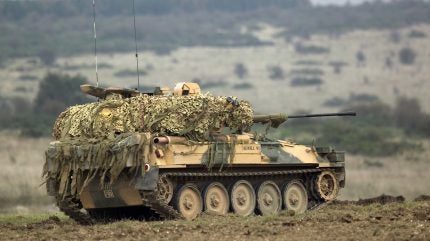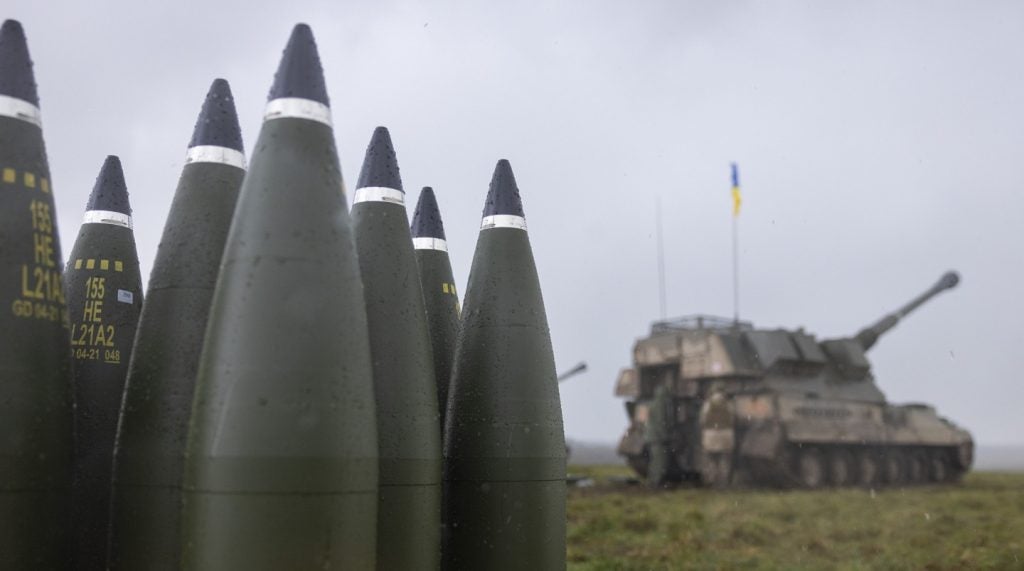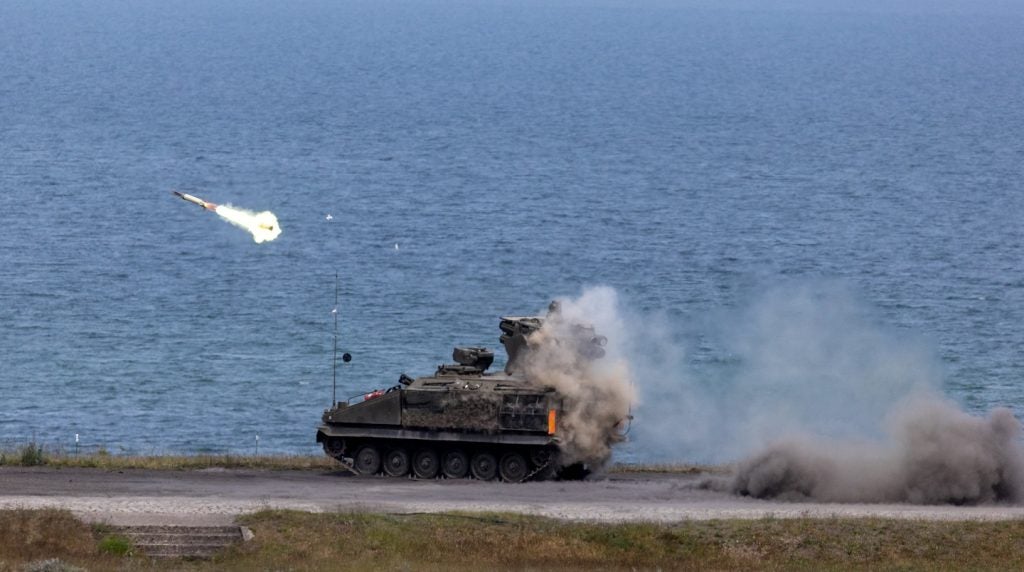
Challenger, Storm Shadow, Scimitar, Husky, Braveheart, and NLAW.
These are just some of the dozens of system types and thousands of units that the UK has donated to Ukraine war cause, comprising vast swathes of the British Army’s inventory as Nato’s contest against Russia and its allies continues.
In recent days, timed to mark Ukraine’s Independence Day on 24 August, the UK’s Defence Equipment & Support (DE&S), itself an arm of the Ministry of Defence, in a series of social media posts has moved to detail the scale of equipment provision to Kyiv to aid it in its ongoing war against Russia.
However, the posts do not provide a complete listing of donation from the UK’s inventory, with entire vehicle and munition types left out. This includes long-range strike weapons such as the Storm Shadow cruise missile and armoured reconnaissance platforms like the Scimitar light tank.
According to the latest updates, the UK government has provided £7.6bn ($10bn) in military support to Ukraine since Russia’s February 2022 invasion and will provide £3bn in military support for 2024 to 2025.
The new UK government has committed to the sustainment of £3bn per year in military aid to Ukraine until 2030-2031 and has so far provided “around 400 different capabilities” while also signing a new deal with Kyiv to enable it to access funding to acquire UK military equipment.
DE&S talks up UK donations
Posting on 24 and 25 August, DE&S stated that the UK had suppled “billions of pounds of military aid for Ukraine”, before detailing the equipment lists to include 400,000 rounds of artillery ammunition, mainly 155mm, as well as more than 5,000 NLAW soldier portable anti-tank missile systems.
DE&S goes on to list capabilities such as the Challenger 2 main battle tanks (MBT) and AS90 self-propelled howitzers (SPH) as among major systems provided. A total of 14 Challenger 2 MBTs were donated to Ukraine from the British Army, with one known to have been knocked out in combat operations in 2023.
In addition, social media imagery in recent days has indicated a second Challenger 2 tank operated by Ukrainian forces could also have been destroyed in fighting in Ukraine’s offensive into the Kursk region of Russia.
The number of AS90 SPHs donated to Ukraine is stated as being 50 units by DE&S, although this could be inaccurate. It is understood at least ten non-functioning AS90 platforms were also donated as spares vehicles.

Elsewhere, the number of Stormer anti-air vehicles is listed at six units, the first time the UK government has gone on the record with the number of such platforms donated.
Other equipment listed by DE&S include more than 4,000 drones, more than 1,000 Vallon mine detectors, 160 Husky protected vehicles, three Sea King helicopters, and 60 marine boats of various types, including the Commando Offshore Raiding Craft, also known as the ORC.
In terms of training, DE&S states that more than 46,000 Ukrainian military personnel have passed through various UK courses, likely mainly through Operation Interflex’s basic combat training.
However, DE&S posts painted an incomplete picture, with previous reporting from Army Technology disclosing the provision of potentially around 150 Combat Vehicle Reconnaissance (Tracked), and 78 Bv-206 and Vikings all-terrain vehicles. The CVRT family include the Scimitar, Stormer, and other variants, with more than 3,000 built for the British Army and export.
The above list represents equipment and systems taken from the UK’s own stockpiles, except potentially the 400,000 artillery rounds, which are known to be being procured from the open market to supply Ukraine with its indirect fire requirements.
All told, it represents a significant proportion of the British Army’s ageing equipment, including the overwhelming majority of the 155mm artillery.
UK gifts to Ukraine: more to come?
It is unlikely that the UK will be able to send additional Challenger 2 tanks to Ukraine, with around 75% of its remaining fleet destined to receive the Challenger 3 upgrade package and the remainder kept for spares and cannibalisation.
The same could be said of the AS90 155mm artillery, although, if there are any system remaining operational in British Army service, these could be donated in small batches as the Archer interim 155mm artillery system comes online.
However, a series of platform departures will see the British Army shed more than 1,500 armoured and protected vehicles through to 2030, with the out of service dates (OSD) of the Stormer, Cougar-series, Foxhound, and Bulldog all on the horizon, according to research conducted by Army Technology.
The British Army’s Pinzgauer utility vehicle fleet, thought to number several hundred, will depart service from 2030, while the Panther LMV, of which 401 were recorded in service according to GlobalData in 2023, as an OSD of 2037.
Meanwhile, the Stormer mobile short-range air defence platforms, of which up to 180 of in the UK’s inventory, are due to retire in 2026, with their replacement currently undecided.

In 2028 the Cougar family of mine resistant ambush protected vehicle, the so-called MRAPS of the Ridgeback, Mastiff, and Wolfhound, will be retired. Combined, the Cougar fleet could number up to 650 vehicles still operational.
In 2030, the largest single quantity of armoured and protected vehicles is due to leave service with the departure of the Foxhound 4×4 and the FV430/432 Bulldog armoured personnel carrier, with up to 398 and 851 platforms respectively due for retirement.
Elements or wholesale transfers of the abovementioned types to Ukraine could be sanctioned as the British Army continues its once-in-a-generation modernisation plan, and looks for ways in which to reduce its legacy equipment fleets.


